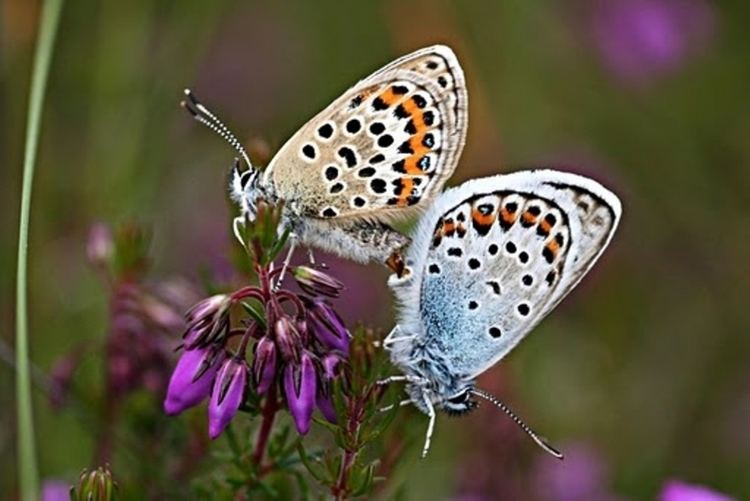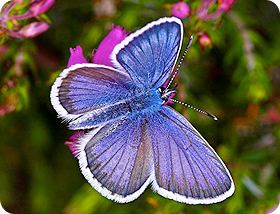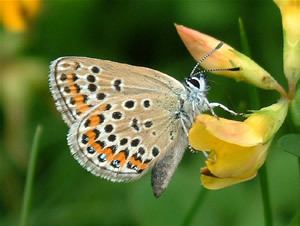Genus Plebejus Higher classification Plebejus | Scientific name Plebejus argus Rank Species | |
 | ||
Similar Plebejus, Butterfly, Holly blue, Butterflies and moths, Plebejus idas | ||
Rare silver studded blue butterfly reintroduced at black down
The silver-studded blue (Plebejus argus) is a butterfly in the family Lycaenidae. It occurs throughout the Palearctic ecozone.
Contents
- Rare silver studded blue butterfly reintroduced at black down
- Silver studded blue butterfly plebejus argus
- Subspecies
- Appearance behaviour and distribution
- Life cycle and food plants
- References
Silver studded blue butterfly plebejus argus
Subspecies

Appearance, behaviour and distribution

So named due to the silvery-blue metallic spots on the underside of the hindwings. The uppersides are a rich, deep iridescent blue in the males with a black border and the characteristic lycid white fringe. on the hindwings there is a row of inconspicuous black spots along the bottom edge. Females are dark brown with orange spots at the edges. On some sites the female has blue colouration but never as extensive as the male and she always possesses the orange spots. The undersides are a typical "blue" design. The ground colour is silvery grey with blue suffusion at the base of the wings in the male and brown in the female. There are a number of black spots, each outlined in white and a row of orange spots along the outer edge of the hindwings, extending onto the forewings in the female. It is next to these orange spots that the "silver-studs" can be seen. Most easily confused with the common blue (Polyommatus icarus), it is generally slightly smaller and in the male the blue is a darker shade. The common blue also has an additional black spot at the base of the underside forewing.

It has suffered severe reduction in its range in the UK due to habitat destruction. Its favoured habitat is heathland and where it is found in the southern strongholds it can still be very numerous. Other habitats include calcerous grassland and dunes. Apart from its strongholds in the southern heathlands it is also found in scattered colonies in Norfolk, Suffolk, Devon, Cornwall and Wales. It is still widespread and locally common across Europe, Asia as far as Japan.
Life cycle and food plants

Eggs are laid on or near the ground, often near ant nests, and pass through the winter hatching in the spring, in late March or early April. They have a wide variety of food plants; on heathland the favourites include heather (Calluna vulgaris), bell heather (Erica cinerea), cross-leaved heath (Erica tetralix) and gorses (Ulex species). On grasslands bird's-foot trefoil (Lotus corniculatus), common rock-rose (Helianthemum nummularium), horseshoe vetch (Hippocrepis comosa) and wild thyme (Thymus serpyllum) are used. The larvae have a close relationship with ants and produce a honeydew-like liquid to feed them. In return the ants will protect the larvae from predators. The black ants Lasius niger and Lasius alienus are the two most commonly associated ant species. In some European countries ants have been seen carrying the larvae. Pupation takes place near, and often inside, ant nests, where they continue to secrete honeydew until the butterfly emerges. It is single brooded, with butterflies on the wing from July until mid-August.


